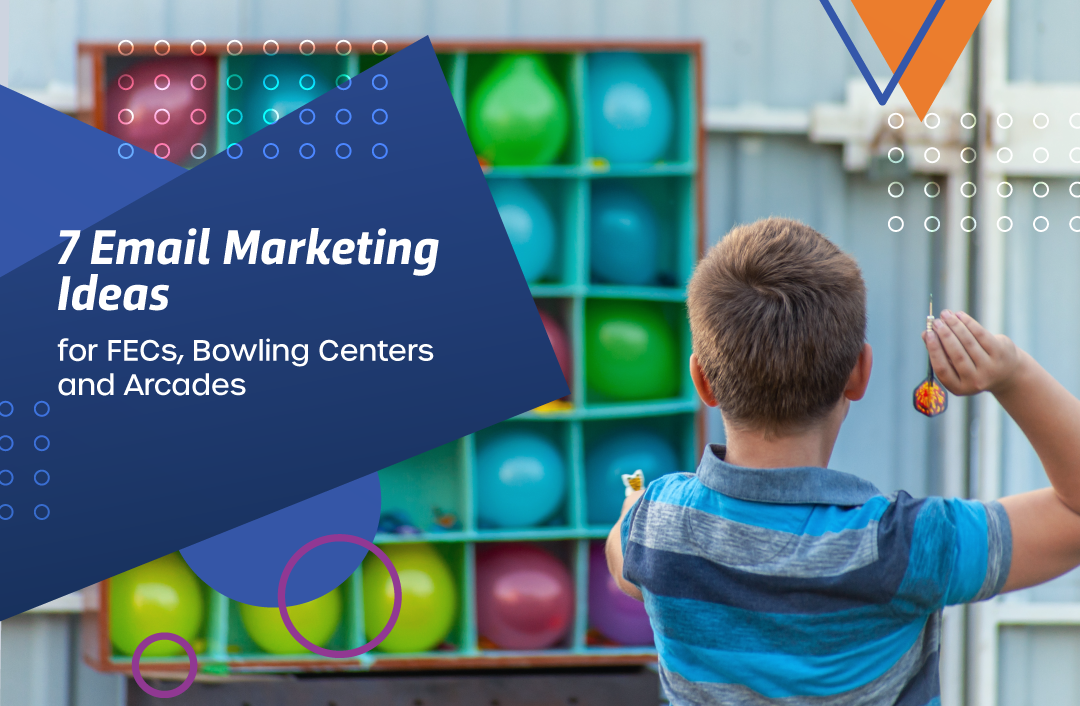Thoughtful program planning and strategic rollout can make all the difference.
Now that you’ve heard about some of the key benefits, new CenterEdge tools, and a success story, you’re probably ready to think about setting up a membership program for yourself.
We’ve put together this easy-to-use guide to help you get started so that you can achieve program success right from the start.
No. 1: Identify the target audience.
The first thing you need to do is determine who your membership is planned for. For example, in last week’s interview with Zach Johnson from Rev’d Up Fun, we learned that their memberships are targeted at children, with optional parent add-on memberships. This is smart because the more specific your program is, the easier it is to create unique messaging that appeals to that audience (and the people who buy for them).
Maybe your membership program is geared toward students, teenagers, individuals, or VIPs who want the best of everything and don’t mind paying more for it. The bottom line is that you want to be crystal clear in who your program is for to design and market it with them in mind.
No. 2: Establish your baseline(s).
You won’t be able to adequately measure program success if you don’t start with a baseline. And to do that, you need data. Take some time to gather as much as you can about your current guests. Some key data points to analyze are:
- Visit frequency – on average, how often in a year are guests coming to your facility? If your facility uses waivers, you quickly have access to this. Each time a guest purchases an attraction ticket, you associate the purchase to a guest profile and verified waiver.
Suppose you sell attraction passes or entitlements, food and beverage packages, or game room value on a player card or another type of media, such as a wristband. In that case, you might also be tying those transactions to customer profiles. Then each time a guest visits and uses their payment media, you’re able to see how they’re engaging with your facility.
- Per capita spending – how much does the average person spend each visit?
- Annual guest spend – over the year, what historically is the average amount you can expect a guest to spend at your facility?
- Most popular (and profitable) attractions and offerings – what attractions, offerings, and food packages do people want the most
But what if I’m not currently capturing guest data?
If you’re not currently associating a guest’s profile to their onsite transactions, consider starting there. One easy way to do this is to build a basic loyalty program. There are many loyalty program types, but the easiest are purchase-based or visit-based programs that give returning guests points towards a reward such as a bonus, free item, or discount once a visit number or spending threshold is met.
By enrolling everyone at the point of sale, you can capture both visit and spending behaviors because you can associate transactions with a guest’s profile. This allows you to see how often they’re visiting, what they’re doing while onsite, and how much their average spends are. Then you’ll be able to create specific program objectives and goals, which are great for your business. The loyalty program is great for guests because they feel like they’re being rewarded for being customers.
No. 3: Outline the key program objectives.
Get clear on your program objectives and quantify them. Who are you targeting? What buyer motivation will you be tapping into with this offer? How many more times per year do you want this guest to visit? How much do you want them to spend during their visit? How many members do you want each week/month/quarter? What kind of experience are you offering this guest?
No. 4: Design a meaningful program.
Once you have a clear picture of your baselines and objectives, it’s time to design your membership programs with those objectives in mind. A few Do’s and Don’ts for building any kind of relationship programs like a membership or loyalty rewards program:
- Keep it simple – any program you implement should be easy for your staff to sell and your guests to buy. Don’t confuse them by trying to create five different membership programs. Think in terms of great – better – best.
- Be creative – Keep your objectives top of mind while you design your program. If you’re clear on who your audience is, it’s easier to build the right program for that audience.
- Don’t be too restrictive – If a program seems too limited, guests won’t see value in it and won’t buy it. Include one-time or unlimited attraction passes each time they visit or a certain number every month.
- Price intelligently – figuring out the right price for your membership programs can be tricky, but that’s why data is so important. If the average guest visits you twice a year and spends $50 each visit, your annual customer relationship value is $100. That doesn’t mean you should charge $50 per month. It’s more about perception at the time of purchase.In Rev’d Up Fun’s case, their Ballocity attraction is $10 per play, but a monthly membership is only $9 per month for unlimited Ballocity each visit. Guests can immediately see the value of the membership in that it’s less than one visit per month for the guest to “get their money’s worth.” That can help them feel like your program is a low-risk investment, and therefore more likely to buy.
That doesn’t mean that you should underprice your program. Doing that can overwhelm your capacity and make it so you don’t leave any room in your schedule for nonmembers. A good starting point might be to consider how a membership price within 10% above or below attraction or package pricing might affect buyer perception and willingness to buy. Also, take some time to analyze what a member’s annual spending and the impacts to your business might be for the membership term.
- Don’t forget the perks – a special members’ only line, custom membership cards or wristbands, unique merchandise, discounted games, bonus points on purchases, higher reward level tiers are all great incentives that add value to your offer. Many of these perks can boost per capita and annual member spending.
- Keep your promises – We haven’t talked about guest service in a while. But remember that your members expect you to give them the experience they’re paying for. Broken games, consistently maxed-out attraction capacity, and substandard food can diminish trust and damage your reputation.
No. 5: Create a rollout plan.
Once you’re ready to offer memberships to your guests, be sure to build a thorough rollout plan. Plan for :
- Goal setting and sales training for frontline staff
- Plan for any guest training needs – including creating any collateral you wish to distribute explaining your program and instructions for how to set up or manage their online account for their membership, etc.
- Instore marketing needs
- Email or text marketing plan, messaging, and timelines
- Social media marketing strategy, including organic and paid social, member testimonials, etc.
- Weekly and monthly rollout and program check-ins to measure success and program effectiveness
No. 6: Make your program work for you.
In addition to rollout marketing, remember that one of your core objectives is to drive new consumer behavior. Your members are a captive audience who know and like you, and they’re most likely to be open to hearing from you. Consider a consistent outreach strategy that encourages members to visit, buy, or book from your business.
No. 7: Measure program success and refine your strategy.
Like with any other offering or strategy, be sure you routinely measure the success of your rollout, plan adoption, marketing, and engagement. That will ensure that you maintain an effective program that’s great for your guest and great for your business.
Make implementing a membership program easier for you and your guests. Get the new Advantage Memberships today by contacting support@centeredgesoftware.com.
Search Resources
Subscribe to Email Updates
Featured Resources
Blogs //
7 Email Marketing Ideas for FECs, Bowling Centers, and Arcades

Blogs //
5 Event Types that Can Win Big For Your FEC

News //
CenterEdge Welcomes John Keys as Sales Director

Blogs //
How to Protect Your FEC’s Brand

Posts by Topic
- Advantage Payments (7)
- Brand Management (19)
- Business Growth (81)
- Capacity Management (2)
- CenterEdge News (28)
- Client Interviews (8)
- Credit Card Processing (3)
- Data & Reporting (12)
- Digital Signage (1)
- Event Management (20)
- Facility Management (10)
- Food & Beverage (8)
- Guest Experience (34)
- Guest Management (20)
- Holiday Season & Promotions (5)
- Industry Events (10)
- Inventory Management (1)
- Loyalty Programs (8)
- Marketing Tips (24)
- Operations (1)
- Point of Sale (10)
- Product Launch (11)
- Productivity (5)
- Profitability (35)
- Redemption Management (1)
- Sales (35)
- Season Passes (1)
- Team Training (60)
- Waivers (2)

Leave a Comment